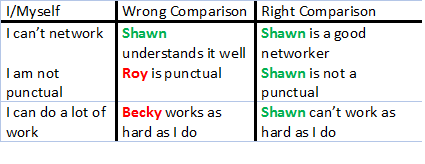Be Effective not Extravagant in Business Writing
- 674 Words| 5 mins read
- Sep 21, 2018
- 3 min read
Updated: Jul 14, 2020
Who should read?
Those who have made their resume and Google tips don’t feel enough
Those who present papers but don’t get the desired results from them

This blog is not a course on effective business writing but will cover very pragmatic tips on how to approach business narratives and resumes in particular. This is a result of over 100 resumes and documents that I have reviewed day to day and observed which ones result in decisions and calls. We will apply design thinking principles to this blog.
1. Divergent and Convergent Thinking: Break down all content without thinking about structure. Put as much content as possible onto a white board or paper with all facts, presumptions, events or possibilities (Divergence). Convergence in 3.
2. Identify the client persona: The entire deep dive/content should be suited to the reader. Whiteboard the traits of readers. Example: My readers are: Skeptics, Experts, and result-oriented. Takeaway.
Skeptics – Provide enough data to convince skeptics. Avoid words that can trigger their amygdala or alert them to a fraud. We go often go overboard in resumes with such words. A few no-nos are: Made a 100 recommendations to xyz process. For skeptics, suggestions never benefit anyone. A high number of suggestions means no work was actually done. I suggest (don’t laugh) you reduce the number of these suggestions and make them implementations. Also, state what benefit was derived from these. Avoid Superlatives “Large, huge” bla bla. Put numbers; readers can decide whether it is a mammoth or an ant.
Experts – Don’t exaggerate what you don’t know and leave that section as ‘help needed’ or ‘research outstanding’ since readers are subject matter experts or quote the source. Any ill-researched presentation will de-rail conversations.
Result-Oriented – These readers need a sense of closure post reading the document. Therefore, scope the problem, keep the discussion on track, present whether it is for information/Conversation or decision, provide options so that the decision makers can choose from the proposed solutions and list next steps. Make sure a decision/concluding remark is taken when you leave the room.
3. Convergence: Convergence is a two-step process; getting the right design: structure and flow, and a crisp introduction. Create sections for the structure which have a logical flow. Purpose (Decision/Information or conversation), problem statement including scope, a deep dive, and proposal/conclusion/Next Steps. Every section should flow like a story or in a logical order (steps in a process/ chronology etc.). Have smooth transitions and remove jolts from paragraph switches. This retains attention. For a resume, a short profile introduction where the first paragraph gives away everything about you followed by details. The tip is that deep dive sections/detailed profile should be written first, and introduction should be written last. This flow is called divergence to convergence. This sets context to the reader before he dives deep in the narrative or your profile.
4. Remove garbage and reduce effort: We are in an attention economy where reader’s don’t want to make an effort. Treat every word like real-estate and then run the garbage test. Ask the question: “Does this statement add any value?”. “Does this graph tell the story better? Or is it taxing?” If taxing, then remove graph and write “Sales are x% down YOY from y units in 2017 to x units in 2018”. Don’t deviate from generally accepted conventions/templates in your organization. People can read through them faster, and you don’t have to re-invent the wheel.
5. Beta Testing and Iteration: Readers read through their minds and not yours. So, always take feedback from a cross-functional peer group or better if you can get people who match your client persona to get feedback on your narrative/resume. Don’t choose people who always go mild on feedback. With the feedback, be agile and keep iterating.
Additional Resources: Read on the Pyramid Principle by Barbara Minto, Chicago Manual of Style, and Basics of Clarity & Grace by Joseph Williams to get a better understanding on logical writing. You can also do Agile Crash courses on Udemy.




Comments